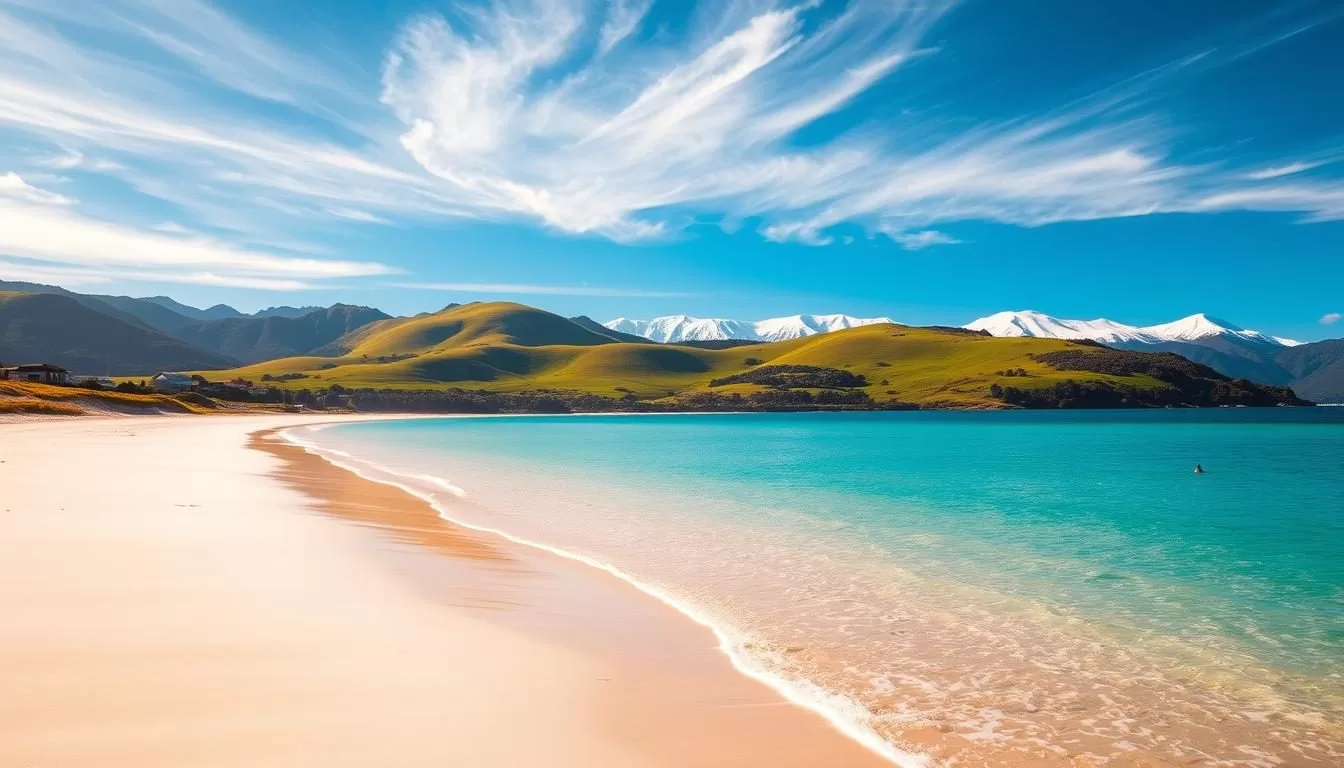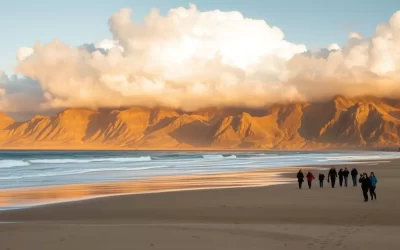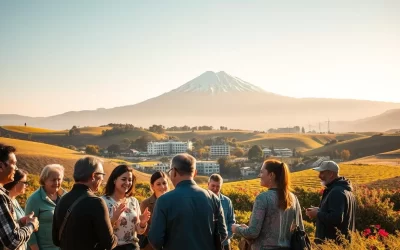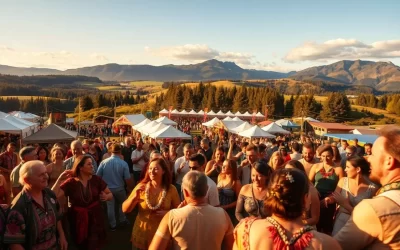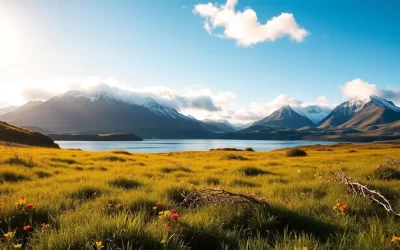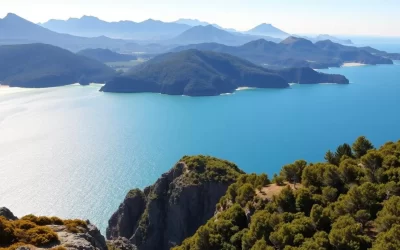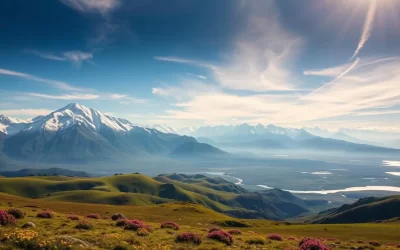Planning a trip to New Zealand? Timing is everything. This destination offers a diverse climate, from warm summers to cooler winters, making it essential to choose the right season for your adventure. Whether you’re seeking outdoor activities or cultural experiences, understanding the weather patterns can enhance your journey.
Summer in New Zealand, from December to February, brings warm temperatures ranging from 20-24ºC (68-75ºF), ideal for outdoor exploration. However, it’s also the busiest season, so booking accommodations early is key. Autumn, from March to May, offers milder weather with temperatures between 17-22ºC (62-71ºF) and fewer crowds, making it a great alternative.
Winter, from June to August, is perfect for those who enjoy cooler temperatures and winter sports, with averages of 11-15ºC (51-59ºF). Spring, from September to November, sees temperatures rise to 16-20ºC (60-68ºF), offering a balance of pleasant weather and fewer tourists. No matter when you visit, New Zealand promises unforgettable experiences tailored to your preferences.
Introduction
Discover the perfect timing for your adventure with this comprehensive guide. Whether you’re planning a short getaway or an extended journey, understanding the climate and seasonal trends can make all the difference. This article will help you navigate the best time to visit, ensuring you enjoy every moment of your trip.
This guide dives into weather specifics, seasonal highlights, and tips to avoid crowds. You’ll learn why timing matters and how to plan your day activities around unpredictable conditions. From late spring to early autumn, the weather is often at its most pleasant, making it the ideal time to explore.
Welcome and What to Expect
We’re here to help you make informed decisions about your travel plans. Expect detailed insights into the climate, along with practical advice tailored to your preferences. Whether you’re a nature enthusiast or a culture seeker, this guide has something for everyone.
Your Guide Overview
This article serves as your go-to resource for understanding the weather and planning your trip. You’ll find insider tips on how to make the most of your visit, from booking accommodations to choosing the right activities. Let’s get started on crafting your perfect adventure!
Understanding New Zealand’s Unique Climate & Seasonal Variations
Exploring the diverse climate of this country can transform your travel experience. From subtropical warmth in the north to cooler, snow-capped regions in the south, the weather here is as varied as its landscapes. Understanding these variations is key to planning a trip that suits your preferences.
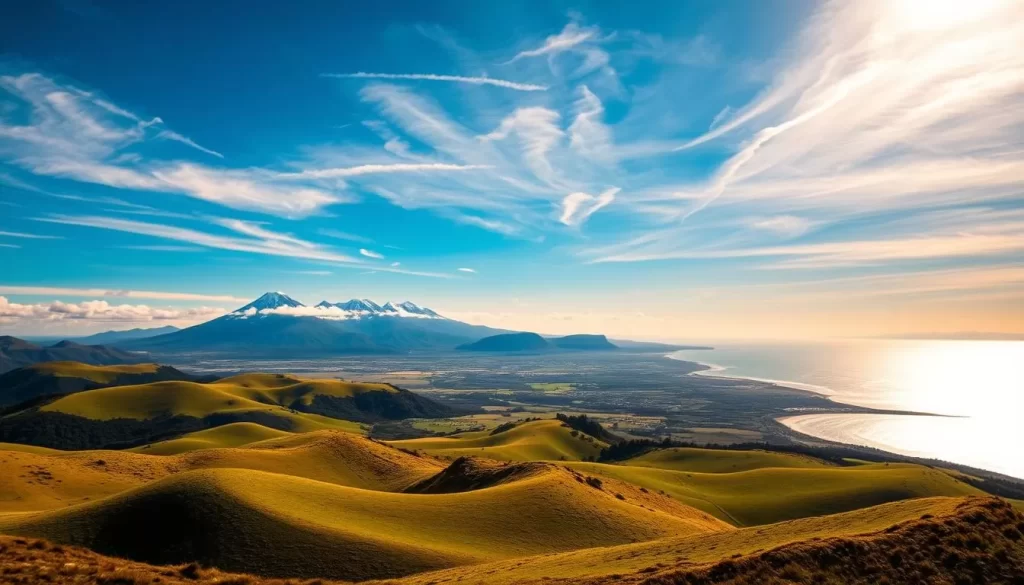
Climate Zones and Weather Impact
This country boasts multiple climate zones, each offering distinct experiences. Coastal cities rarely drop below 40°F in winter, making it a comfortable destination year-round. The temperate maritime climate ensures mild temperatures, with summer highs ranging from 21 to 25°C (70-77°F).
These zones influence everything from outdoor adventures to city sightseeing. For instance, summer is ideal for beach visits, while autumn offers quieter trails for hiking. Knowing these patterns helps you choose the best activities for your trip.
Comparing North and South Island Conditions
The northern regions are generally warmer, with subtropical climates perfect for exploring lush forests and coastal areas. In contrast, the southern parts are cooler, often featuring snow-capped mountains and crisp winter air.
For example, while the north enjoys summer highs of 25°C (77°F), the south experiences milder temperatures, averaging 12 to 16°C (53-61°F) in winter. This contrast allows travelers to experience a wide range of activities, from sunbathing to skiing.
Understanding these differences ensures you pack appropriately and plan activities that align with the weather. Whether you’re hiking, sightseeing, or relaxing, the climate here offers something for everyone.
North Island, New Zealand: Best Months for a Weather-Savvy Trip
Choosing the right time to explore this destination can make or break your experience. The weather here varies significantly, and understanding these patterns ensures you enjoy every moment of your adventure.
Timing is crucial because it directly affects your activities. For example, summer brings warm temperatures, perfect for beach outings, while winter offers cooler conditions ideal for snow sports in select areas.
Temperature plays a major role in planning. During summer, daytime highs can reach up to 86°F (30°C), making it the best time for outdoor adventures. In contrast, winter temperatures rarely drop below freezing, except in inland mountain regions.
Even within the same region, weather variations require precise planning. For instance, while coastal areas enjoy mild winters, higher altitudes can experience freezing conditions. This means packing appropriately and choosing activities that align with the season.
Here’s a quick comparison of seasonal temperatures to help you decide the best time to visit:
| Season | Average Temperature | Best Activities |
|---|---|---|
| Summer (Dec-Feb) | 75-86°F (24-30°C) | Beach visits, hiking |
| Winter (Jun-Aug) | 39-59°F (4-15°C) | Snow sports, city tours |
Whether you’re drawn to summer’s warmth or winter’s charm, understanding these nuances ensures your adventure is unforgettable. Plan wisely to make the most of your time visit.
Seasonal Highlights: Exploring Summer, Autumn, Winter, and Spring
Each season in this region offers unique experiences, making it a year-round destination for travelers. Whether you’re drawn to sunny beaches or serene cityscapes, understanding the seasonal highlights ensures you make the most of your visit.
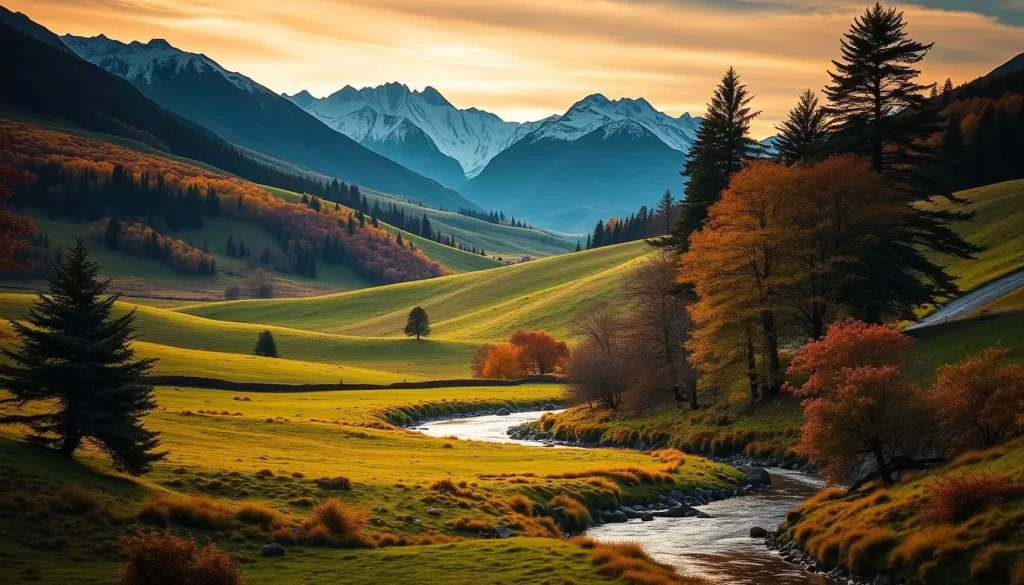
Warm Summers for Beach and Outdoor Fun
Summer, from December to February, is the perfect time for outdoor adventures. With temperatures averaging 20-25°C (68-77°F), it’s ideal for beach visits, hiking, and exploring national parks. The warm weather also makes it a great time to visit iconic spots like Rotorua’s geothermal wonders or the Hobbiton Movie Set.
If you’re a fan of water activities, summer is the best season for kayaking, swimming, and even skydiving over scenic landscapes. Just remember to book accommodations early, as this is the busiest time of the year.
Mild Winters and the Charm of Quiet Cities
Winter, from June to August, brings cooler temperatures averaging 12-16°C (53-61°F), creating a peaceful atmosphere in cities and towns. This is the best month to enjoy scenic retreats, thermal spas, and cozy cafes without the summer crowds.
For those who love winter sports, nearby mountain regions offer skiing and snowboarding opportunities. The quieter cities also provide a chance to explore cultural sites and local markets at a relaxed pace.
Here’s a quick guide to seasonal activities:
| Season | Highlights |
|---|---|
| Summer (Dec-Feb) | Beach visits, hiking, outdoor adventures |
| Winter (Jun-Aug) | City tours, thermal spas, winter sports |
| Spring (Sep-Nov) | Wildflower blooms, mild weather, fewer crowds |
| Autumn (Mar-May) | Scenic drives, harvest festivals, pleasant temperatures |
No matter the season, this destination offers something special for every traveler. Plan your trip around these highlights to create unforgettable memories.
Outdoor Adventures and Hiking Conditions in Different Months
Exploring the great outdoors here offers unforgettable adventures, especially when you time your visit right. The hiking season runs from October to April, with clear conditions in November and March being ideal for both day hikes and multi-day treks. Whether you’re a seasoned hiker or a beginner, understanding the best months for trails can make your experience even better.
Best Season for Trails and Day Hikes
For those who love day hikes, November and March are the best months to hit the trails. The weather is mild, and the trails are well-maintained, offering secure hiking conditions. These months also provide longer daylight hours, giving you more time to explore.
Popular trails like the Tongariro Alpine Crossing are at their best during this period. You’ll enjoy stunning volcanic landscapes and pristine lakes, making every step worth it. Just remember to pack layers, as temperatures can vary throughout the day.
Planning a Multi-Day Trek Amid Changing Weather
Multi-day treks require careful planning, especially when weather conditions can shift unexpectedly. November and March are ideal for these adventures, but flexibility is key. Always check the forecast and be prepared for sudden changes.
For example, the five-day hiking tour includes visits to glowworm caves, traditional villages, and the Emerald Lakes. These experiences are best enjoyed with proper gear and a well-thought-out itinerary. Accommodations along the way, like cozy lodges, add comfort to your journey.
Here’s a quick guide to help you plan your hiking adventure:
| Month | Trail Conditions | Key Considerations |
|---|---|---|
| November | Clear, mild weather | Ideal for day hikes and treks |
| March | Stable, pleasant temperatures | Perfect for multi-day adventures |
| December-February | Warmer, busier trails | Book accommodations early |
| April | Cooler, fewer crowds | Great for late-season hikes |
No matter when you go, planning your outdoor adventures with flexibility ensures you’ll have an unforgettable experience. Enjoy the trails, embrace the changing weather, and make the most of your time in this stunning destination.
Weather Patterns and What to Pack for Your Trip
Packing for your trip requires careful planning, especially when dealing with unpredictable weather. This destination is known for its sudden changes, so being prepared is key to staying comfortable. Whether you’re exploring cities or hiking trails, knowing what to pack can make all the difference.
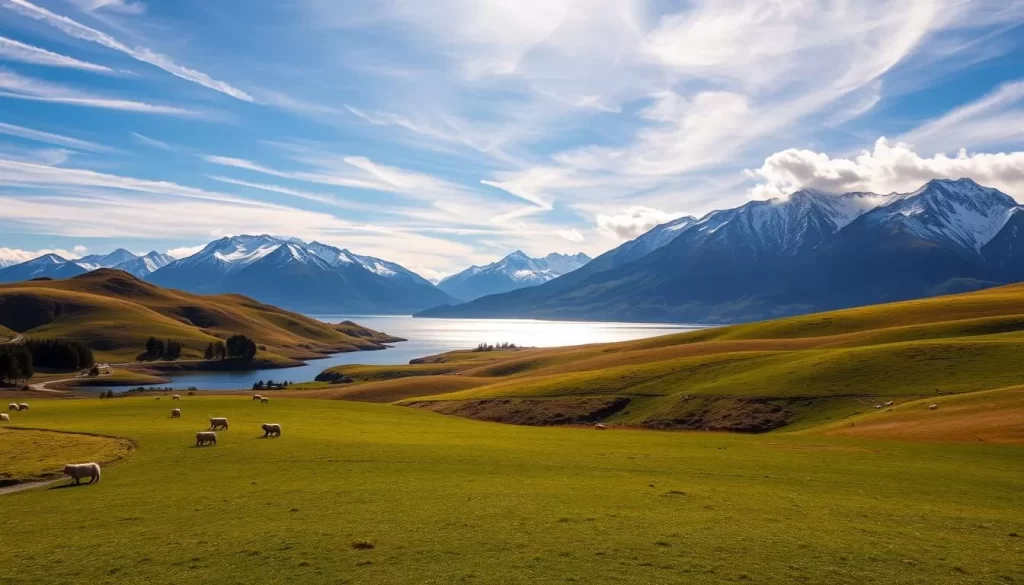
Rain can occur in any season, so waterproof gear is a must. Layering is also essential, as temperatures can vary throughout the day. Start with a base layer, add a zip-up sweater, and finish with a light jacket. This approach ensures you’re ready for anything.
Layering Tips for Unpredictable Conditions
Layering is your best friend when dealing with changing weather. Begin with moisture-wicking fabrics for your base layer. These keep you dry and comfortable, even during physical activities. Add a mid-layer like a fleece or zip-up sweater for warmth.
Your outer layer should be lightweight and waterproof. A good jacket protects you from rain and wind, making it ideal for outdoor adventures. Don’t forget accessories like gloves and a hat, which can be easily added or removed as needed.
Rain Gear and Essential Accessories
Rain gear is non-negotiable for this trip. A waterproof jacket or poncho is essential, as showers can happen unexpectedly. Pair it with waterproof boots to keep your feet dry, especially if you’re hiking or walking through wet areas.
An umbrella is another handy item, particularly for city exploration. Accessories like a portable charger and compression socks can also enhance your comfort. Remember, investing in quality gear now can save you money and stress later.
For more insights on planning your trip during peak seasons, check out our guide on . It’s packed with tips to help you make the most of your adventure.
Avoiding Crowds: Tips for a Relaxed Experience During Peak Seasons
Traveling during shoulder seasons ensures a more relaxed and authentic experience. If you’re planning to visit new zealand, timing your trip can help you avoid large crowds and enjoy quieter attractions. Shoulder seasons like November and April offer pleasant weather and fewer tourists, making them ideal for a stress-free adventure.
One of the best ways to dodge the crowd is to visit popular places early or late in the season. For example, arriving at iconic spots like Rotorua’s geothermal wonders before 10 AM can give you a peaceful experience. Similarly, planning your time visit new around local events can help you avoid temporary spikes in tourism.
Traveling During Shoulder Seasons
Shoulder seasons like November and April are perfect for those seeking a quieter trip. The weather is mild, and you’ll find fewer tourists at popular destinations. This is also a great time visit new to uncover hidden gems and enjoy a more authentic local experience.
Here are some practical tips to make the most of your trip:
- Plan your visit during November or April to avoid peak tourist seasons.
- Visit popular attractions early in the morning or late in the afternoon.
- Check local event calendars to avoid dates with large gatherings.
- Explore lesser-known destinations for a quieter experience.
By timing your trip wisely, you can enjoy the beauty of new zealand without the hustle. For more insights on planning your adventure, check out our guide on New Zealand travel tips.
Special Events and Local Festivals to Enhance Your Visit
Immerse yourself in the vibrant culture and festivities that make this destination unforgettable. From lively cultural celebrations to thrilling sporting events, there’s always something happening to enrich your experience. Timing your visit around these events can add a unique flavor to your trip.
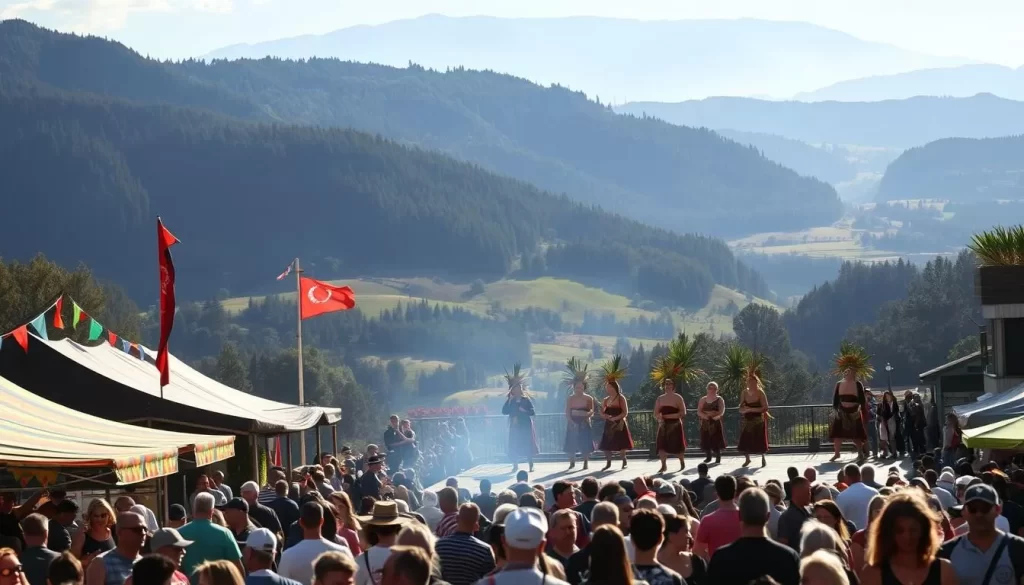
Notable Cultural and Culinary Festivals
Cultural festivals here offer a deep dive into local traditions. The Pasifika Festival, for example, showcases the rich heritage of 10 Pacific cultures, including Samoa, Tonga, and Fiji. It’s a colorful celebration of music, dance, and food that you won’t want to miss.
For food lovers, the Bread & Circus World Busker’s Festival is a must-see. This event combines street performances with culinary delights, creating a feast for all senses. Held in late summer, it’s a perfect way to enjoy the warm weather and local flavors.
Seasonal Sporting and Community Events
Sports enthusiasts will find plenty to enjoy year-round. The ASB Classic Tennis in January attracts top players and fans alike, offering world-class matches in a stunning setting. Winter brings the Snow Machine festival, a unique blend of skiing, music, and adventure that’s perfect for thrill-seekers.
Community events like Waitangi Day celebrations in February highlight the nation’s history and culture. These gatherings are a great way to connect with locals and learn about their traditions.
Here’s a quick guide to some of the top events by season:
| Season | Event | Highlights |
|---|---|---|
| Summer (Dec-Feb) | ASB Classic Tennis | World-class matches, stunning venues |
| Winter (Jun-Aug) | Snow Machine Festival | Skiing, music, and adventure |
| Spring (Sep-Nov) | Pasifika Festival | Cultural performances, food, and dance |
| Autumn (Mar-May) | Bread & Circus World Busker’s Festival | Street performances, culinary delights |
Whether you’re exploring a national park or joining a local celebration, these events offer unforgettable memories. For more tips on planning your trip, check out our guide on .
Insider Tips: Booking Accommodations and Travel Planning Insights
Making the most of your trip starts with smart planning and insider knowledge. Whether you’re exploring vibrant cities or serene landscapes, securing the right accommodations and flights can make all the difference. Here’s a guide to help you navigate the process with ease.
Finding the Best Flight Deals
Booking flights during off-peak times can save you up to 40% compared to high-season prices. April and September are ideal months for travel, offering pleasant weather and fewer crowds. Use price comparison tools and set alerts to snag the best deals. Flexibility with your travel dates can also lead to significant savings.
Consider flying mid-week, as tickets are often cheaper than weekend flights. Airlines also release discounted fares during sales events, so keep an eye out for promotions. Planning ahead and booking early ensures you lock in competitive prices.
Local Hacks for Stress-Free Booking
When it comes to accommodations, booking well in advance is crucial, especially during peak seasons. Look for properties with flexible cancellation policies, giving you peace of mind if plans change. Staying slightly outside popular areas can also save money while offering a more authentic experience.
Use local booking platforms to find hidden gems that may not be listed on international sites. For a seamless experience, consider a five-day trip to North Island, which blends urban and natural highlights. This itinerary ensures you make the most of your visit new destination.
Here are some quick tips to streamline your planning:
- Book accommodations and flights at least 3-6 months in advance.
- Use price tracking tools to monitor fare changes.
- Opt for accommodations with free cancellation options.
- Explore local booking platforms for unique stays.
By following these tips, you’ll enjoy a stress-free and memorable trip. For more detailed insights, refer to a comprehensive guide tailored to your destination.
Conclusion
Choosing the right time to visit new zealand can transform your journey into an unforgettable adventure. From sunny summers to crisp winters, each season offers unique experiences tailored to your preferences. Whether you’re hiking scenic trails or exploring vibrant cities, understanding the weather patterns ensures you make the most of your trip.
Packing essentials like waterproof gear and layering options is crucial for adapting to unpredictable conditions. Booking accommodations and flights in advance, especially during peak seasons, guarantees a stress-free experience. By planning wisely, you’ll avoid crowds and enjoy the zealand top attractions at your own pace.
This world-class destination invites you to immerse yourself in its natural beauty and rich culture. For more tips on crafting your perfect itinerary, explore our ultimate travel guide. Start planning today and get ready to create memories that will last a lifetime.
The above is subject to change.
Check back often to TRAVEL.COM for the latest travel tips and deals.
Here are some Tours & Sightseeing suggestions that might pique your interests!
